Snorkelling is generally a safe and a rewarding activity but what do you need to think about to avoid trouble? Just like going for a walk, a bike ride, or in fact any physical activity, snorkelling has its risks.
We have been snorkelling and diving for over 40 years and have managed to stay out of harm’s way. From swimming with a buddy, to knowing when and where to snorkel there are lots of little things you can do to feel more confident in the water.
Read our tips for staying safe when you snorkel so you can do everything from swim with turtles to explore crystal clear sinkholes.
Disclosure: Please Note That Some Links In This Post May Be Affiliate Links, And At No Additional Cost To You, We Earn A Small Commission If You Make A Purchase. Commissions Go Toward Maintaining The Snorkel Spots Website.
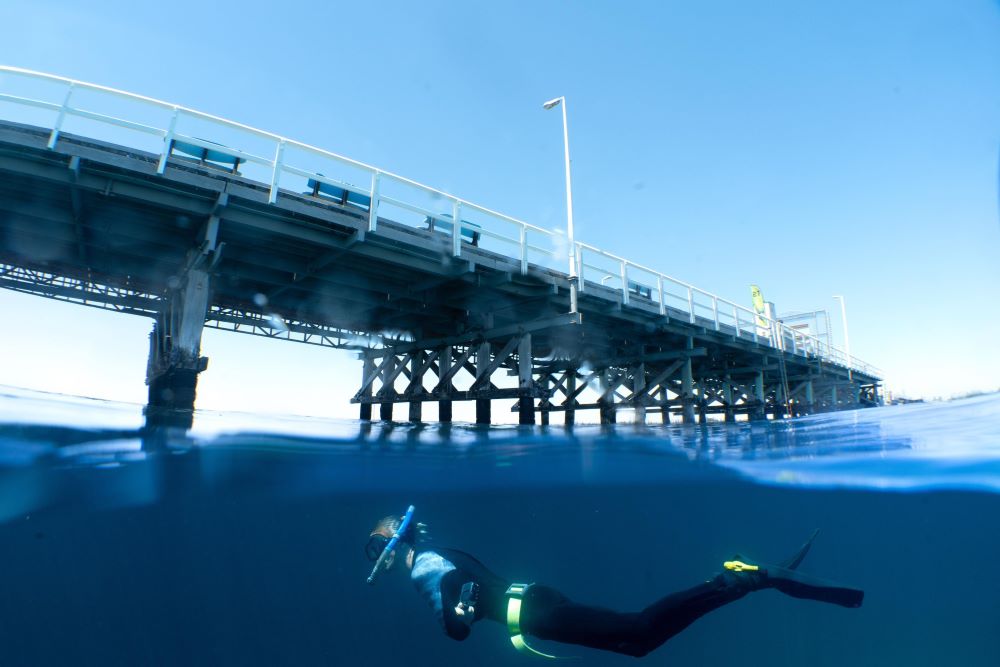
Can you Swim?
Sadly, the biggest danger for new snorkellers is drowning. You must be honest with yourself about your swimming ability.
There is a huge difference between splashing around a backyard or hotel swimming pool and snorkelling in the ocean. Waves, currents, deep water and poor visibility are all things you might encounter in the ocean that you don’t get in a pool.
You also need to be happy putting your face in the water, know how to float and tread water and be comfortable using your snorkelling gear.
Read our guide on how well you should be able to swim before you snorkel.
How Fit are you Really?
While floating between coral bommies in calm water straight off the beach is relaxing, not every snorkel is so easy.
Sometimes you need to cover some ground snorkelling, or swim against a current or tide – and it can be tiring, especially if you are not very skilled at using your flippers.
Before you set off on a snorkel, be realistic about your fitness and how much ground you plan to cover. Don’t underestimate how difficult it is swimming against even a light current.
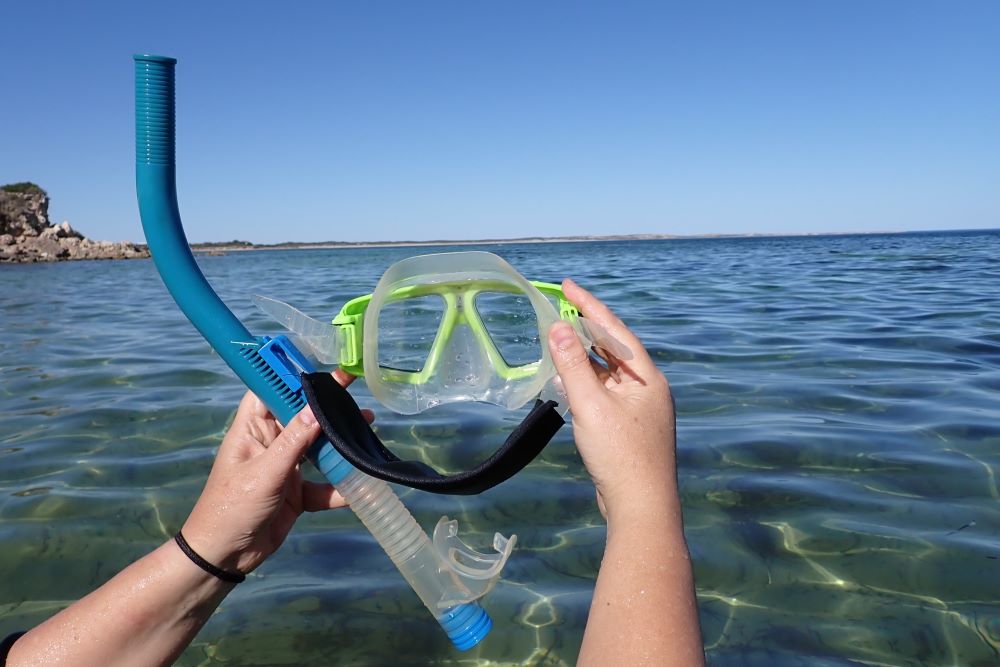
Use Well Fitted Gear
It always pays to check that your snorkelling gear is in good condition before you set off. Look for splits in your fins, especially around the heel. Make sure the facemask seal hasn’t deteriorated. If you snorkel with children, check their fins still fit. Tight fins can cause cramping which you really want to avoid.
The last thing you want is to be out in the water and have an equipment failure. Any non-performing equipment can raise anxiety levels and potentially put you at risk.
Can you use your Snorkelling Gear?
You can have the best, most comfortable gear – but you need to know how to use it. If you can’t clear your snorkel and mask and don’t know how to kick with fins you can get yourself into a dangerous situation.
Practise using your snorkelling gear in a pool or shallow calm water before you venture out too far.
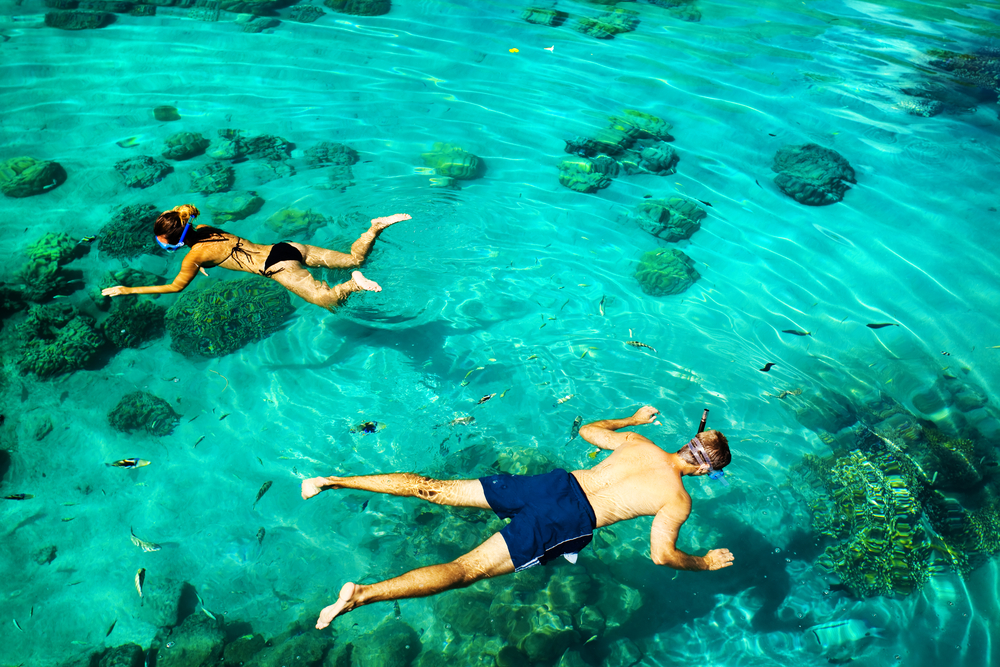
Snorkel with a Buddy
One of the best ways to safe in the water is to snorkel with a buddy. There is safety in numbers, so whether you go with a friend or a tour group, it is the way to go. If you are unlucky enough to get into trouble, help will be close by.
If you do have a snorkel buddy, keep an eye on each other. This can be easier said than done! When you are surrounded by turtles and tropical fish it can be hard to lift your eyes up for a moment but try to keep track of where you both are.
Have a Snorkel Plan
One way to help keep track of your snorkel buddy is to come up with a snorkel plan before you get in the water. Discuss which direction you are going to swim, how far from shore you are going, and how long you plan to snorkel for.
The snorkel buddy system falls down if you both get in the water and head off in different directions!
Get Local Advice & Take It!
This is one of the first things we do when we get to a new snorkelling spot. No one knows local conditions like a local. Visitor Centres, local dive shops and even people walking on the beach are all good sources of information.
Not only can you get important information about how local tides and currents work, but you can also learn about must see features.
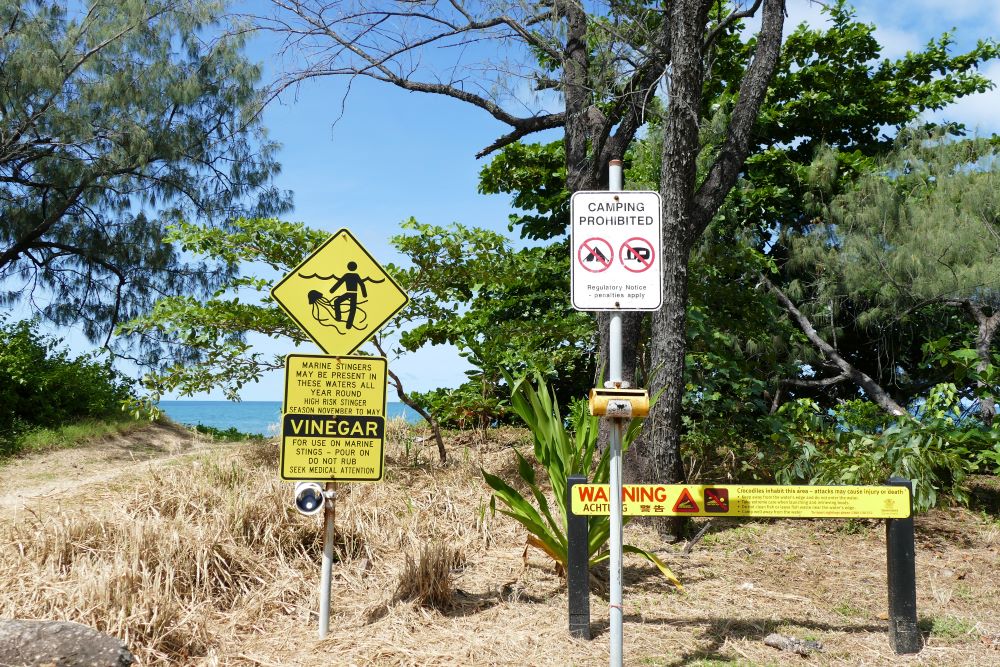
Respect Warning Signs
At Turquoise Bay on Ningaloo Reef, signs warn about a strong current at the end of the drift snorkel. It’s easy to think these warnings are for ‘other people’, but I can tell you, as a former competitive swimmer and seasoned snorkeller, that current will have you on the outer reef in the blink of an eye if it gets you!
So, whether it is currents or dangerous marine creatures, pay attention to warning signs which are there to keep you safe.
Dress for the Conditions
Protecting yourself from the cold or the sun should be an important part of your planning.
If you are lucky to be snorkelling somewhere warm, it pays to cover up. As you will be spending most of your time on the surface, you need to protect the back of your legs, arms and head. For guys like me with a ‘high forehead’, a bandana is a must-have snorkelling accessory.
But it’s the cold that can really get you. Cramps and hypothermia are a danger to snorkellers. Even in 22 – 25 degree water, we will wear a shorty wetsuit. Anything cooler, we break out the full length wetsuit
Living in South Australia, we do plenty of cool-cold water snorkelling and if you are not warm, you are miserable. And the last thing you want is a terrible leg cramp out in the water – which can happen in cold water.
If you are on a snorkelling tour, always go with what the guides suggest as far as wetsuits, boots or hoods go. It will help you stay in the water longer which is where you want to be.
Stay up Top
If you are an inexperienced snorkeller, don’t be in a hurry to duck dive deeper into the water. You need to make sure you can clear your snorkel before you do this, or you might breath in some water when you surface.
Tides & Currents
Before you snorkel somewhere, try to learn something about local tides and currents. In shallow, calm water this might not be an issue, but in deeper water you can quickly be swept away from shore. And swimming against even a gentle current can be tiring and difficult.
Dive shops, lifeguards and locals are all good sources of this type of information. Also check apps like Willy Weather, BOM Weather and Windy for local tide, swell and wind conditions.
Don’t Touch!
While there are lots of well-known dangerous creatures in the water, many will not be an issue if you keep your hands to yourself. Marine life does not like feeling threatened but if you try to touch something it might try to defend itself which is when bites and stings can occur.
Many marine creatures also have sensitive linings which can be affected if they are touched by people. So, to keep you and the marine life safe it is definitely better to look but not touch!
Be Aware of Things around you
It pays to be aware of your surroundings. Before you get in the water have a look around. Are there boats, fishing lines, jet skis, kayaks, paddle boards or boat ramps that you need to be mindful of?
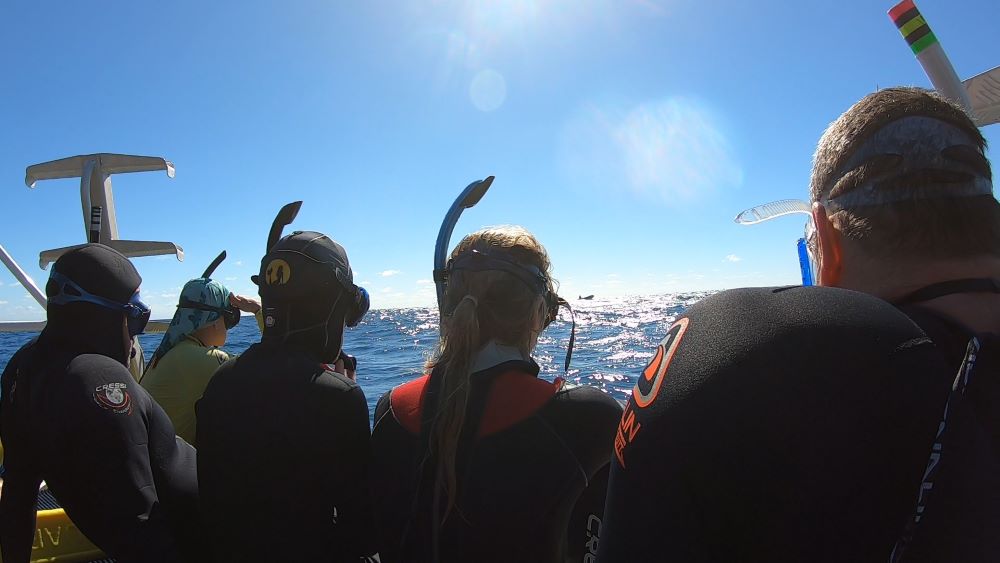
Go on a Guided Tour
If you are an inexperienced snorkeller or snorkelling with children, a great way to build your confidence is to go on a guided snorkelling tour. Not only will tour operators take you to safe locations, but they can show you the best of the location you are visiting and they have expert knowledge on local conditions.
Know the Risks
The biggest danger when you go snorkelling is not understanding the risks. These are the top 5 things you will have to be aware of when you snorkel.
- Be realistic about your swimming ability
- Be honest about your level health and level of fitness
- Know how to use your snorkelling gear – can you clear your snorkel and facemask, and kick with fins?
- Understand the conditions – tides, currents, daily weather forecasts, water temperature
- What might bite or sting you?
- Fun Facts about Sharks - February 15, 2024
- Where can you Safely Swim with Sharks in Australia? - February 15, 2024
- How to Snorkel – 15 Tips for Beginners - February 15, 2024

